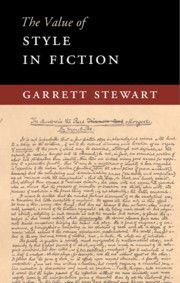Book contents
2 - Emergent Turns: Defoe toward Dickens
Published online by Cambridge University Press: 01 June 2018
Summary
So we begin, not with signature stylistic features from author to author, but with a few signal moments of more broadly categorized effect. As signposts in the signifying options available to, and varied by, a self-consciously unfolding lineage of the novel form, these isolated moments are to be estimated in their distinct local force – rather than comparatively esteemed. To this end, the test of value rather than quality – a valuation phrasal and rhetorical – requires checks and counterexamples, filling in the gaps between lauded masters of verbal finesse with other and still major writing that may seem less immediately “stylish.” Deep down, there is in fact nothing “ish” about our topic in the ordinary sense of that suffix, nor necessarily mannered or “stylized” about its evidence. Rather, style is the manner of writing in whatever period or key. Style inheres, rather than adheres.
We are therefore concerned not with something “styled” after the fact, inflected over and above meaning, but with the style of meaning in its own right, the form it takes – or, better yet, conferring no priority, the expressive gestures that form it. Since stylistic attention does not single out stylish writing, whatever that might be, it follows that prose style, as investigated here, is, in the truest literary sense, a quotient of all narrative fiction. This is because the affiliation between narrative meaning and narrative wording, story and style, is no less intrinsic to prose that deliberately sounds unworked and spontaneous than it is to the most magisterially controlled pacing or the most overwrought frenzy of grammar, diction, or image. And this, in turn, is because style, deep down again, is the very manifestation of the medium in its tapped possibilities.
Deep down – but how deep? And, more specifically, where? Only the byplay between contrastive examples is likely to suspend attention to surface contours – even while noting and probing them – long enough to reveal their conditioning linguistic base. That is the premise here. Writing about the “value” of style – or say “values,” plural, but not in the sense of ethical inferences, but rather of tonal valences – requires a move beyond all local rankings or preferences. This doesn't come naturally.
- Type
- Chapter
- Information
- The Value of Style in Fiction , pp. 34 - 69Publisher: Cambridge University PressPrint publication year: 2018



